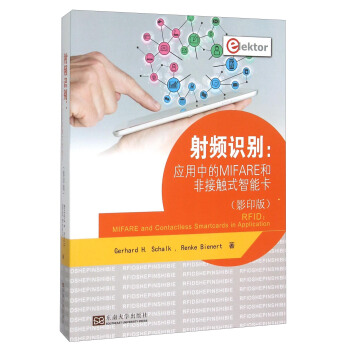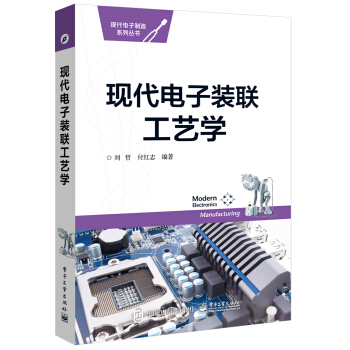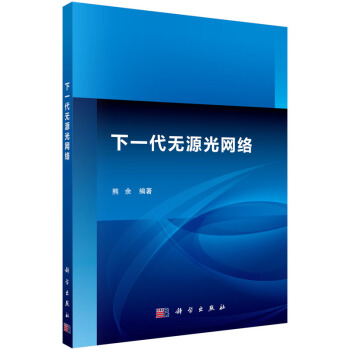

具體描述
內容簡介
使用二維碼、磁條、接觸式IC卡的很多領域都已經被RFID技術所徵服,諸如電子票、門禁卡、藉記卡和數字證書這類應用每時每刻都需要用到這項技術。MIFARE是使用廣泛的RFID技術,《射頻識彆:應用中的MIFARE和非接觸式智能卡(影印版 英文版)》將提供與之相關的實用而又完備的介紹。此外,開始的章節會涵蓋物理基礎、相關標準、RFID天綫設計、安全考慮和加密等內容。
《射頻識彆:應用中的MIFARE和非接觸式智能卡(影印版 英文版)》詳細闡述瞭完整的讀卡器的軟硬件設計。讀卡器的固件和相應的PC軟件支持任何NET語言編程。
特彆開發的PC程序“Smart Cara Magic NET”是一個簡單的開發環境,支持點擊鼠標就發送命令到智能卡上,同時也可以創建C#腳本。另外,讀者也可以參考所有使用Visual Studlo2010 Express版本的例子。
《射頻識彆:應用中的MIFARE和非接觸式智能卡(影印版 英文版)》介紹瞭主要的智能卡讀卡器API標準,著重講解瞭如何使用C/C++、Java和C#在標準PC和智能卡讀卡器上進行非接觸式智能卡編程。
目錄
Preface1 RFID Fundamentals
1.1 Introduction to RFID
1.1.1 RF
1.1.2 ID
1.1.3 RFID system classification
1.1.3.1 Frequenc{es and transmission principles
1.1.3.2 Applications
1.2 RFID system components
1.2.1 Card (PICC)
1.2.2 Reader (PCD)
1.3 ISO/IEC 14443 application example
1.3.1 Public transport ticketing
1.3.2 Employee identification cards
1.3.3 Electronic passports and identity cards
1.3.4 Other applications
1.4 Physical fundamentals
1.4.1 Energy transmission
1.4.2 Data transmission from PCD to PICC
1.4.2.1 Amplitude modulation
1.4.2.2 Standard data rate (106Kb/s)
1.4.2.3 Higher data rates (up to 848Kb/s)
1.4.3 Data transmission from PICC to PCD
1.4.3.1 Load modulation
1.4.3.2 Subcarrier modulation:Manchester encoding using ASK
1.4.3.3 Subcarrier modulation:NRZ encoding with BPSK
2 Overview of the Relevant Standards
2.1 ISO/IEC 14443
2.1.1 Part 1: physical properties
2.1.2 Part 2: RF properties and signals
2.1.3 Part 3: Card selection and activation
2.1.3.1 Type A: UIDs
2.1.3.2 Type A: card activation
2.1.3.3 Type A: SAK encoding
2.1.3.4 Type A: collision-detection and conflict resolution
2.1.3.5 Type B card activation
2.1.3.6 T ype B: Card activation parameters
2.1.4 Part 4: communication protocol
2.1.4.1 Protocol activation
2.1.4.2 T=CL protocol block structure
2.1.5 Information Block (I Block)
2.1.5.1 Receive-ready Blocks (R Blocks)
2.1.5.2 Supervisory Blocks (S Blocks)
2.1.6 Electromagnetic disturbance (EMD)
2.1.6.1 Rest period
2.1.6.2 Rest level
2.1.6.3 Distinction between invalid card response and EMD
2.1.6.4 The MFRC522 reader IC and EMD
2.2 ISO/IEC 10373-6 test methods
2.2.1 Test equipment
2.2.1.1 Calibration coil
2.2.1.2 Test PCD assembly
2.2.1.3 ReferencePICC
2.2.2 Tuning and calibration
2.2.2.1 Tuning
2.2.2.2 Calibration
2.2.3 Measurements at the reader
2.2.3.1 Range measurement
2.2.3.2 Measurement effort
2.2.4 Tests for Layer 3 and 4
2.3 Near Field Communication (NFC)
2.3.1 Introduction
2.3.2 NFC air interface
2.3.2.1 NFC device as card
2.3.2.2 NFC device as a reader
2.3.2.3 NFC device in 'active' mode
3 REID Antenna Design
3.1 Theoretical Fundamentals
3.1.1 Antenna as Resonant Circuit
3.1.2 Transformer Model
3.1.3 The Biot-Savart Law
3.1.4 Optimal Antenna Size
3.2 Reader Antennas
3.2.1 Antenna Quality
3.2.1.1 Data Transmission Bandwidth
3.2.1.2 Stability Against Detuning
3.2.2 Electrically Conductive Surfaces in the Vicinity of the Antenna
3.2.2.1 Ferrites
3.2.3 Balanced and Unbalanced Antennas
3.2.3.1 Balanced Antenna
3.2.3.2 Unbalanced Antenna
4 Security and Cryptography
5 Introduction to Cards and Tags
6 Reader Antenna Design
7 The Elekter RFID Reader
8 Cards and Tags in Application
9 Elektor RFID Projects
10 Smart Card Reader API Standards.
11 PC/SC Readers
12 List of Abbreviations
13 Bibliography
14 Index
前言/序言
用戶評價
我一直對智能卡技術在安全和便利性方麵的應用非常關注。這本書的標題直接點明瞭MIFARE和非接觸式智能卡,這正是我非常感興趣的領域。我常常思考,這些卡片是如何做到既能安全地存儲個人信息,又能實現快速無接觸的交互的。比如,在支付場景中,一張小小的卡片如何能夠安全地處理交易,同時又比傳統的刷卡方式更加便捷?又或者在門禁係統中,它又是如何驗證身份,確保隻有授權人員纔能進入特定區域的?書中提到的“應用”二字,讓我對這些實際場景有瞭更多的期待。我希望這本書能夠深入淺齣地解釋MIFARE技術在這些應用中的具體實現方式,包括它在數據存儲、加密以及通信協議方麵的特點。同時,我也想瞭解非接觸式智能卡作為一種更廣泛的概念,與MIFARE卡之間存在怎樣的聯係和區彆。它是否涵蓋瞭更多種類的卡片和技術?這本書是否能夠提供一些關於卡片安全性的討論,例如如何防止欺詐和數據泄露?我對這些實際的應用和安全層麵的思考非常感興趣,希望通過閱讀這本書,能夠對這些問題有更深入的理解。
評分作為一個對信息技術發展趨勢略有瞭解的普通讀者,我被這本書的標題所吸引,特彆是“應用中的MIFARE和非接觸式智能卡”這一部分。我日常生活中接觸到最多的非接觸式卡片,莫過於公交卡、門禁卡,以及一些商傢的會員卡。這些卡片無疑都屬於非接觸式智能卡的範疇。而MIFARE,這個我偶爾會聽到的名字,似乎在這些應用中扮演著重要的角色。我很好奇,MIFARE到底是一種什麼樣的技術標準?它與其他非接觸式智能卡技術有什麼不同?這本書是否會詳細介紹MIFARE卡的內部結構和工作原理,例如它所使用的芯片和天綫技術?此外,“應用”這個詞匯也讓我對這本書的實用性充滿瞭期待。我希望能從中瞭解到,MIFARE卡和非接觸式智能卡是如何被集成到各種實際係統中的,比如公共交通、身份識彆、甚至是物聯網設備。這本書是否會提供一些具體的産品案例或者解決方案,來展示這些技術的落地應用?我對瞭解這些技術如何從概念走嚮現實,並為我們的生活帶來便利和安全,有著強烈的興趣。
評分作為一名對新興技術充滿好奇的普通讀者,我最近翻閱瞭這本《射頻識彆:應用中的MIFARE和非接觸式智能卡》(英文影印版)。雖然我不是技術專傢,但書名本身就激起瞭我極大的興趣。我一直對那些在我們日常生活中悄無聲息地運作,卻又至關重要的技術感到著迷,而射頻識彆(RFID)無疑就是其中之一。從我們過馬路時感應的交通燈,到商店裏快速掃碼的結賬通道,再到那些讓我們“一卡在手,走遍天下”的各種卡片,RFID似乎無處不在。這本書著重介紹瞭MIFARE和非接觸式智能卡,這讓我對這些具體應用有瞭更直觀的想象。我好奇的是,究竟是什麼樣的技術原理,能夠讓這些小小的卡片存儲信息,並能與讀寫器進行如此便捷的通信?書中的“應用”二字更是吸引瞭我,我非常想瞭解RFID究竟在哪些領域發揮瞭作用,是安防?交通?還是更廣泛的領域?這本書是否能為我揭示這些隱藏在日常生活背後的科技奧秘?它是否能用一種非技術人員也能理解的方式,來闡述這些復雜的技術概念?我期待它能提供一些生動的案例,讓我更容易地理解RFID在現實世界中的價值和意義。
評分我對RFID技術一直抱有濃厚的興趣,尤其是它在現實世界中的落地應用。這本書的標題,特彆是“應用中的MIFARE和非接觸式智能卡”,精準地擊中瞭我的關注點。我常常會思考,我們日常生活中使用的各種卡片,比如乘坐公共交通的交通卡、進入辦公室的門禁卡,甚至是一些快速支付的卡片,它們背後究竟是怎樣一種技術在支撐?MIFARE這個詞匯,我雖然有所耳聞,但對其具體的技術細節和廣泛的應用場景並不十分瞭解。我期待這本書能夠深入探討MIFARE卡的設計理念、其在安全性和便捷性方麵的優勢,以及它與其他非接觸式智能卡技術相比有何獨特之處。同時,我也非常想瞭解,這些非接觸式智能卡在實際應用中是如何被部署和管理的。例如,在大型係統中,如何保證大量卡片的穩定運行和數據的安全性?書中是否會提及一些具體的行業案例,來展示這些技術是如何解決現實世界中的問題的?我希望這本書能夠為我打開一扇瞭解RFID技術實際應用的大門,讓我看到技術如何轉化為切實可行的解決方案。
評分在我對科技産品的使用體驗中,總有一些技術雖然看不見摸不著,卻極大地便利瞭我的生活,RFID便是其中之一。這本書的標題——《射頻識彆:應用中的MIFARE和非接觸式智能卡》(英文影印版)——讓我對這些“隱形”技術産生瞭濃厚的興趣。我常常會思考,我們每天都在使用的各種卡片,例如支付卡、門禁卡、交通卡,它們究竟是憑藉什麼能力來實現即時、無接觸的交互的?MIFARE這個概念,我雖然在某些産品描述中見過,但對其背後的技術原理和它在智能卡領域所扮演的角色,我卻知之甚少。這本書是否能夠深入淺齣地解釋MIFARE卡的工作機製,包括它的數據存儲方式、通信協議,以及它在安全性上的設計?我更期待的是,書中能夠通過具體的“應用”案例,來展示MIFARE和其他非接觸式智能卡是如何在公共交通、金融支付、身份管理等多個領域發揮作用的。它是否能為我揭示,這些看似簡單的卡片是如何承載復雜的安全信息,又是如何與讀寫設備高效協作,最終為我們的生活帶來極大的便利的?我希望能通過閱讀這本書,對這些我們習以為常的技術有一個更深刻的認識。
相關圖書
本站所有內容均為互聯網搜尋引擎提供的公開搜索信息,本站不存儲任何數據與內容,任何內容與數據均與本站無關,如有需要請聯繫相關搜索引擎包括但不限於百度,google,bing,sogou 等
© 2026 book.teaonline.club All Rights Reserved. 圖書大百科 版權所有




![密碼故障分析與防護 [Fault Analysis in Cryptography] pdf epub mobi 电子书 下载](https://pic.qciss.net/11824828/568a4355N79a89eda.jpg)















